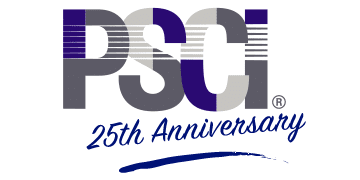(This post was edited on March 22, 2021)
“Why aren’t my roles being filled?” That’s the question IT hiring managers around the country are asking themselves on a daily basis – and for good reason. The longer their roles go unfilled, the less chance their projects have at staying on-time, under budget and, ultimately, succeeding. Plus, an unfilled position creates extra work for existing staff, increasing the likelihood of employee burnout – one of the contributing factors to workers seeking employment elsewhere.
Sure, there are strategic ways employers can increase job offer acceptance rates (Keys to Attracting Top Technical Talent), but a more introspective approach may be more effective when trying to flesh out the root cause of the issue. Below, we examine the biggest reasons IT roles go unfilled – excluding the IT skills gap.
Compensation Packages are Lacking
In other words, you’re not offering the goods – or at least, what today’s workers are looking for. Aside from the obvious, such as pay rate and medical benefits, today’s worker seeks compensation in other forms, such as:
- A Remote Work Option – If the COVID-19 pandemic has taught us anything, it’s that remote work is a totally viable option. And even before the pandemic struck, the push for remote work was gaining steam. So, when life returns to normal and people return to the office, there’ll certainly be a subset of the population who will want to continue working from home. Not because they don’t value human connection, or dislike their coworkers, but because remote work provides a positive work/life balance. Plus, the benefits afforded to an employer by offering a remote work option number more than a few.
- Career Advancement Opportunities – Providing a good offering of career opportunities is seen as one way employers can attract top talent. Most workers enjoy the job security afforded to them through the means of full-time employment. However, if their current work environment is static this may force them to look elsewhere. Employers should be flaunting career advancement potential from the get-go. This will ensure their talent pipelines stay full, employee turnover is kept low, and proprietary knowledge remains in-house.
- A Culture of Learning – Information Technology evolves at a dizzying pace and if IT workers don’t keep abreast of what’s going on, they’ll be left behind. That’s why employers should be offering training and educational opportunities to internal staff on existing as well as new and emerging technologies. This keeps your staff up-to-date on all the latest technologies and trends, while also improving your organization’s curb appeal to job seekers.
The Perfect Candidate Likely Doesn’t Exist
When you have a job opening, it’s only natural to want to hire the best and the brightest. However, more often than not, we find this strategy to be too closely tied to unrealistic expectations. For example, if a hiring manager is looking for a Java Developer with .NET development skills, they’re going to be looking for a while. While these candidates may exist, they don’t grow on trees.
Instead, when looking to make a hire, think about what skills and qualifications are essential for success and then proceed from there. For any auxiliary requirements, consider them more a nice-to-have.
It’s also not wise to write your job description based off the skills and responsibilities of a departing senior team member, especially one who’s been in the role for any extended length of time. It’s likely that many of the skills they’re departing with were acquired while in that position. So, instead, rely on training and upskilling for what you need and seek talent with the propensity for learning. Remember, sometimes the perfect candidate just doesn’t exist, but that doesn’t mean they can’t be created.
Not Hiring When Top Talent is Available
Employers should always be keeping their eyes on the job market. Just as ‘Always Be Closing’ (ABC) is a motivational phrase used to describe a sales strategy, ‘Always Be Recruiting’ (ABR, an admittedly lack luster acronym) should be the strategy deployed by hiring managers. When top talent, especially top IT talent, hits the market, they don’t stay there for long. If you know you’ll have a need in a certain area, begin your search and make your hiring decisions sooner rather than later. You can take the initial down time to train them on company policy, culture, or even on any additional skills that may be of value – or that the worker themselves values (what better way to attract talent?).
Poor Recruitment Strategy
Recruiting and IT recruiting are two separate beasts. Because IT is as close to a foreign language as you can get, IT recruiting takes a special know how. If you don’t have dedicated IT recruiters working on your open IT roles, your hiring managers won’t be reviewing resumes that match what they’re looking for. If you’re relying on your HR departments, or Applicant Tracking Systems, to find talent for you, you’d be wise to seek help elsewhere.
That’s where staffing firms, such as PSCI, come in. Organizations that possess the industry knowledge, talent pipelines, and dedicated staff necessary to handle all the hiring needs of an IT department. If you’re still in need of convincing, consult our previous post(s) on why to partner with a staffing firm. Then, contact us to begin your relationship with PSCI.
Image from rawpixel.com








